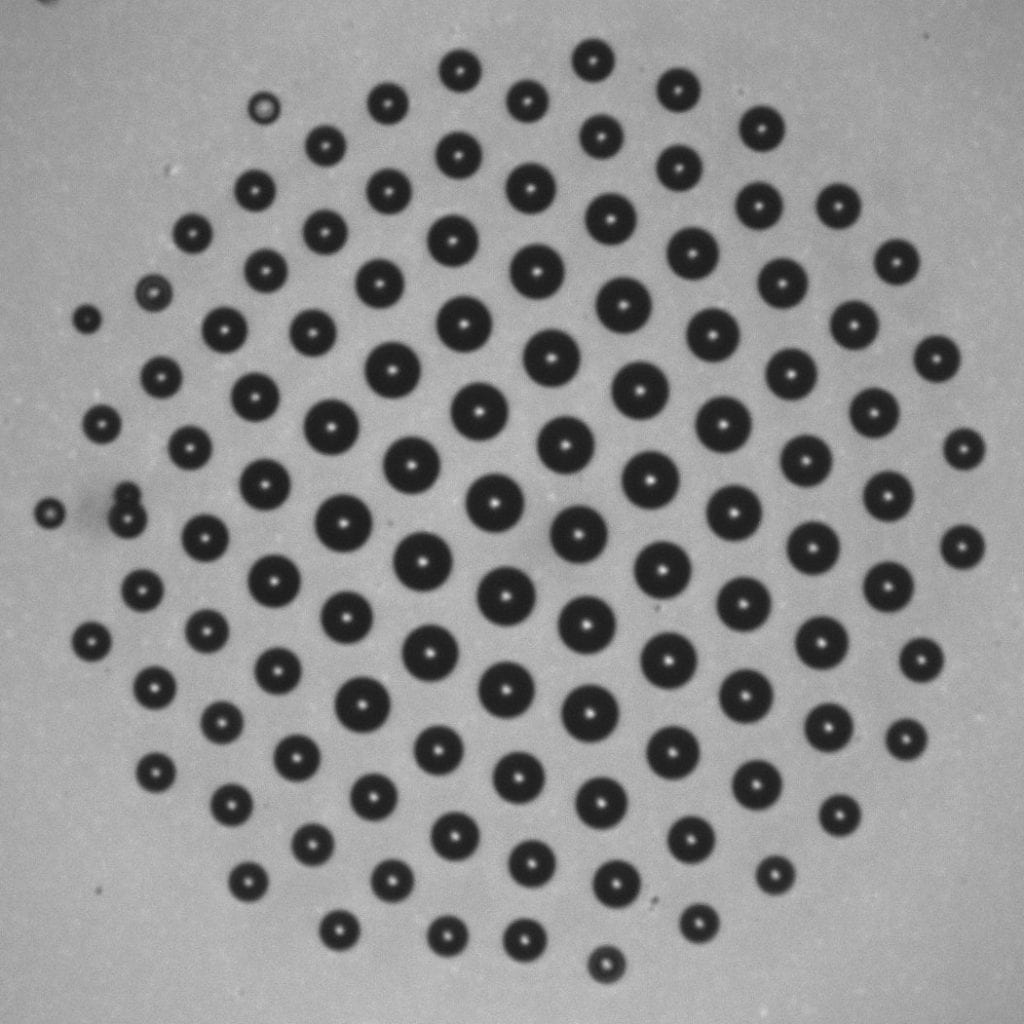Water is known to form ordered hexagonally symmetric structures (such as snow crystals) in its solid state, however not as liquid or vapor. Typically, fogs and aerosols are composed of randomly moving small droplets lacking any ordered structure. Surprisingly, self-organized hexagonally patterned microdroplet clusters levitating over a thin layer of non-uniformly heated water have been recently observed and studied in a remarkable series of recent experiments in experiments by A. Fedorets and co-workers.
The levitating water droplet cluster is an unexpected phenomenon, and it is important to understand what determines the size of the droplets in the cluster, the distance between them, and long-range interaction forces leading to the hexagonal arrangement of the droplets in the cluster.
A recently published paper by an international group of researchers from the University of Wisconsin-Milwaukee (USA), Tyumen University (Russia), and Ariel University (Israel) shows that coupling of thermodynamic and mechanical forces controls the stability of the droplet clusters. The droplet cluster formation is a non-equilibrium thermodynamic process governed by the condensation/evaporation balance and coupling of heat and mass transport with mechanical forces. The balance of the long-range hydrodynamic attraction and repulsion forces stabilizes the cluster patterns. The cluster is a dissipative structure similar to self-organized Rayleigh–Bénard convective cells. The self-organization process is quantified using the parameter called the Voronoi entropy.
Condensed aerosol microdroplets (such as fog droplets) are important for a variety of processes from the water cycle and climate formation to nanofluidics to possible catalytic effects in biochemical reactions including those of abiogenesis (life origin). It is anticipated that the discovery of the droplet cluster phenomenon and its explanation will provide new insights on the fundamental physico-chemical processes such as microdroplet role in reaction catalysis in nature as well as new tools for aerosol analysis and control and microfluidic applications.
Potential application of the droplet cluster may involve various devices where aerosol droplet stabilization is needed, for example, for chemical analysis of droplet content. Usually, the microdroplets are difficult to trace and they form quite unstable conglomerations such as clouds. Understanding levitating microdroplet cluster behavior is important also for fundamental science since it forms an unusual structure of patterned fog. Furthermore, microdroplets can catalyze various chemical reactions and thus serve natural micro-reactors.

The schematic of experimental setup: the water layer (1) on glass-ceramic substrate (2) with light-absorbing coating (3) is heated by laser beam (4) and generates droplet cluster (5) stabilized by infrared irradiation (6).

Self-assembly of a droplet cluster over a heated water layer
Please also see update https://sites.uwm.edu/nosonovs/2017/11/01/now-small-levitating-clusters-of-an-arbitrary-number-of-monodisperse-droplets/